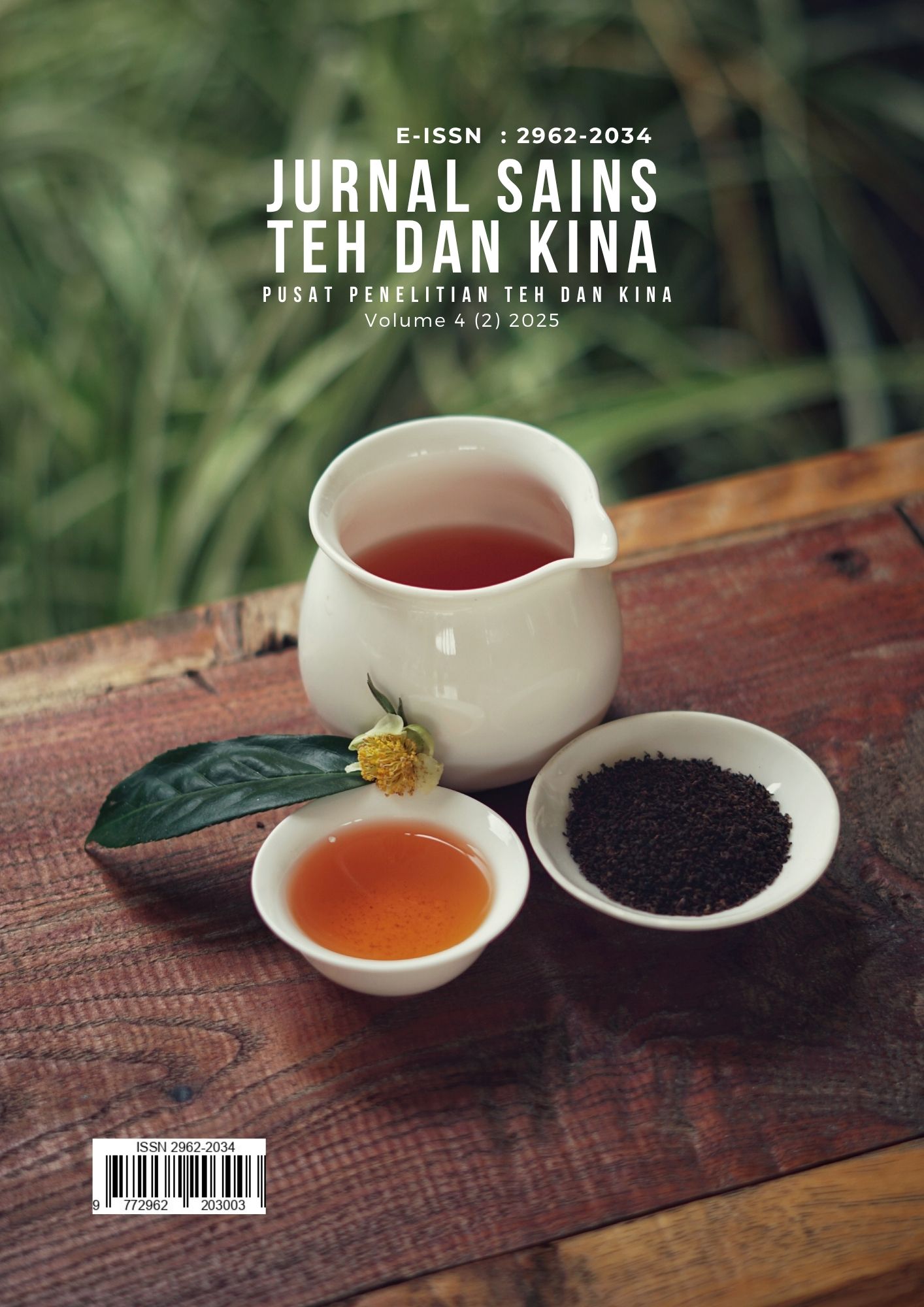Analisis Daya Saing Teh Hitam Bulky (HS 090240) Indonesia di Pasar Asia Pasifik
Analysis of The Competitiveness of Bulk Black Tea (HS 090240) from Indonesia in the Asia Pacific Market
Abstract
Teh hitam bulky (HS 090240) merupakan salah satu komoditas ekspor dengan kontribusi penting bagi subsektor perkebunan. Salah satu pasar potensial untuk diversifikasi yaitu Asia Pasifik. Akan tetapi, dalam lima tahun terakhir terjadi penurunan ekspor teh Indonesia sehingga posisi Indonesia di pasar teh Asia Pasifik terancam. Penelitian ini bertujuan menganalisis struktur pasar, daya saing komparatif, dan daya saing kompetitif teh hitam bulky Indonesia di pasar Asia Pasifik. Data yang digunakan merupakan data sekunder time series periode 1989-2023 yang bersumber dari UN Comtrade. Analisis dilakukan dengan metode Herfindahl-Hirschman Index (HHI), Revealed Comparative Advantage (RCA), Export Product Dynamic (EPD), dan Export Competitiveness Index (ECI). Hasil analisis menunjukkan bahwa pasar teh hitam bulky di Asia Pasifik memiliki konsentrasi yang tinggi (HHI 2.232) cenderung ke struktur pasar oligopoli. Nilai RCA > 1 menunjukkan daya saing komparatif tinggi. Daya saing kompetitif Indonesia lemah (ECI < 1). Meskipun berada dalam posisi rising star dalam EPD, peningkatan ekspor masih rendah sehingga diperlukan strategi pengembangan pasar agar Indonesia mampu bersaing secara berkelanjutan di pasar Asia Pasifik.
Downloads
Copyright (c) 2025 Rizqi Zahroh Nurjannah

This work is licensed under a Creative Commons Attribution-NonCommercial-ShareAlike 4.0 International License.
Authors who publish with this journal agree to the following terms:
a. Authors retain copyright and grant the journal right of first publication with the work simultaneously licensed under a Creative Commons Attribution License that allows others to share the work with an acknowledgement of the work's authorship and initial publication in this journal.
b. Authors are able to enter into separate, additional contractual arrangements for the non-exclusive distribution of the journal's published version of the work (e.g., post it to an institutional repository or publish it in a book), with an acknowledgement of its initial publication in this journal.
c. Authors are permitted and encouraged to post their work online (e.g., in institutional repositories or on their website) prior to and during the submission process, as it can lead to productive exchanges, as well as earlier and greater citation of published work (See The Effect of Open Access).







